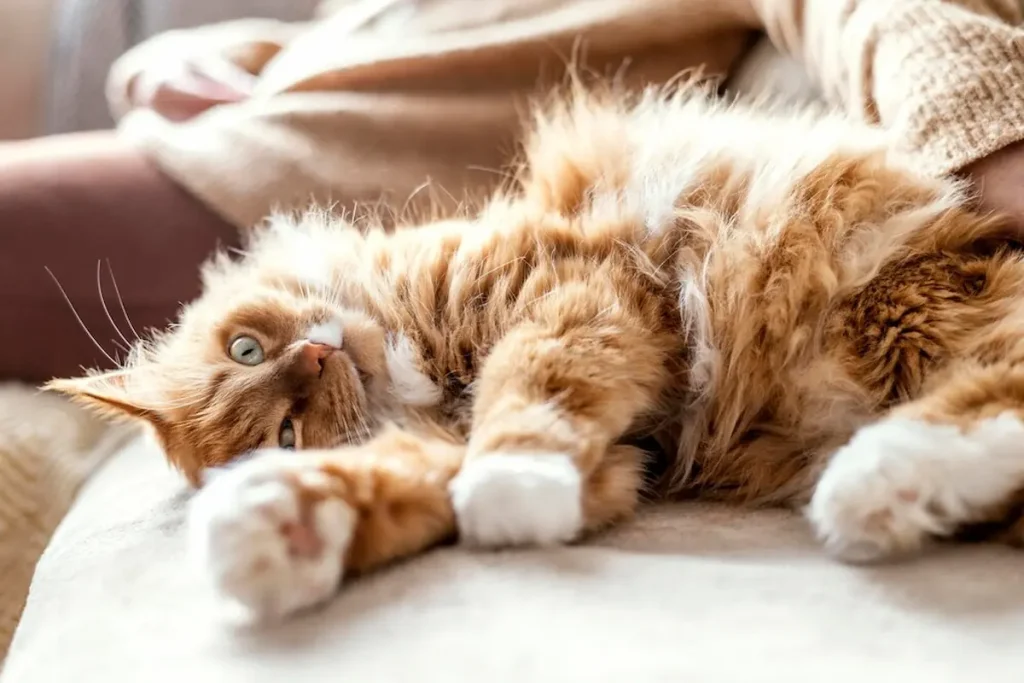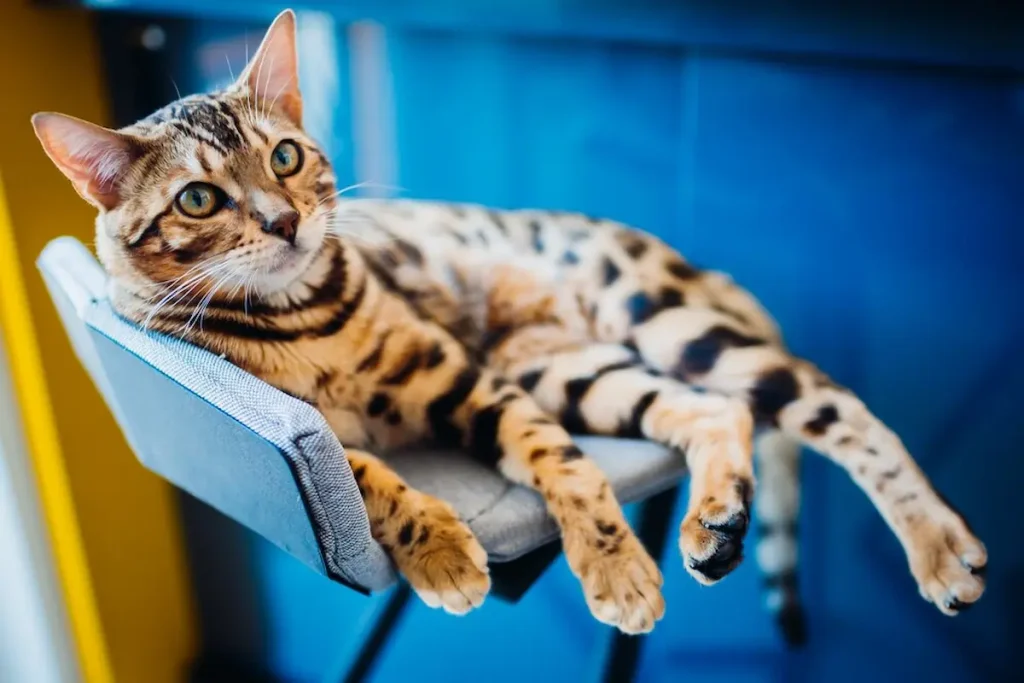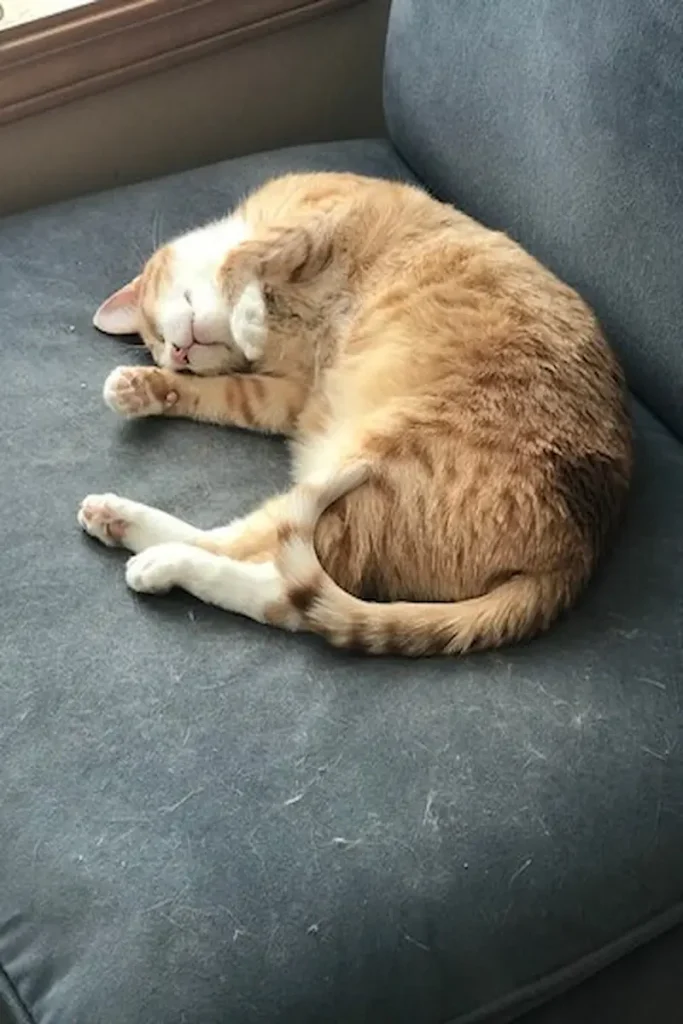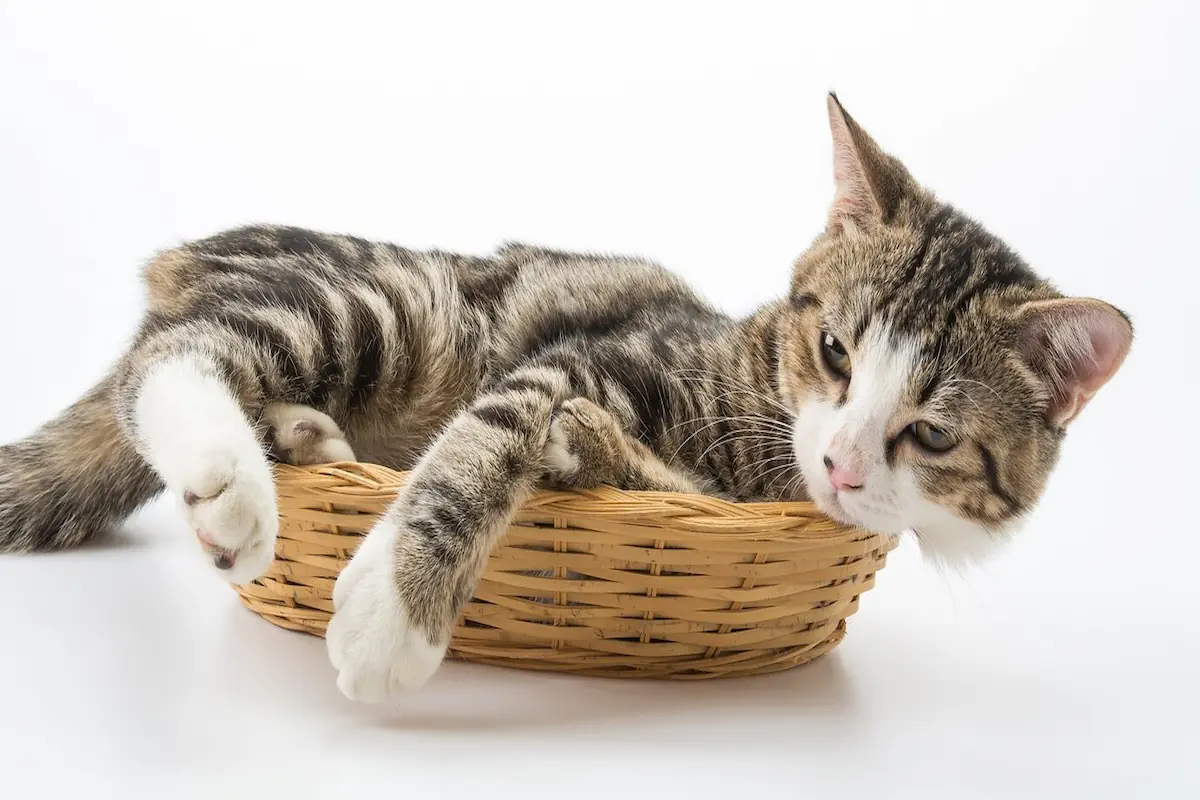Understanding Cat Behavior When They’re Unwell
When our feline friends aren’t feeling their best, their behavior often changes. One of the most noticeable changes is how they sleep. You might find your cat sleeping in odd positions or in places they usually avoid. Understanding these behaviors can help you monitor their health better.

Why Do Cats Sleep So Much When Sick?
Cats are notorious for their love of sleep, but when they’re sick, you might notice them sleeping even more. This increased sleep can be their way of conserving energy to fight off illness. Much like humans, when a cat’s body is under stress, it may require more rest to heal effectively.
Related: This is the top 10 most expensive cat breeds
Common Sleeping Positions of Sick Cats
When a cat is sick, they may adopt various sleeping positions that indicate their comfort level or discomfort. Here are some common positions you might observe:
1. The Cuddle Position
In this position, your cat might curl up against you or another pet. This behavior often signifies that they are seeking comfort and security. Cats are social creatures, and they often look to their loved ones for warmth and reassurance when they don’t feel well.
2. The Curled-Up Ball
A cat that sleeps in a tight ball is trying to conserve warmth and protect its vital organs. If your cat prefers this position when sick, it might indicate that they’re feeling vulnerable. This is often a comforting posture for them during stressful times.
3. The Stretching Pose
While this position is typically seen in healthy cats, a sick cat may stretch occasionally to relieve discomfort. If your cat frequently stretches and then returns to a sleeping position, it could be their way of trying to ease stiffness or pain.
4. The Side Sleep
When a cat sleeps on its side, it usually indicates a high level of trust and comfort in its environment. However, if your cat is unwell and sleeps this way, it might also indicate that they’re feeling particularly vulnerable. Keep an eye on their breathing and overall comfort in this position.
5. The Tucked-In Position
This is where your cat tucks its head and limbs in close to its body. This position can indicate discomfort or a desire for warmth and protection. If your cat is regularly found in this position when sick, it’s essential to monitor their condition closely.
Signs Your Cat Is Not Just Sleeping

While sleep is normal for cats, there are certain signs to watch for that might indicate something more serious:
1. Changes in Appetite
If your cat is sleeping more than usual and has also lost interest in food, this could be a red flag. A decreased appetite, especially when combined with lethargy, may suggest that your cat is unwell.
2. Lethargy and Lack of Playfulness
Cats are usually playful creatures. If your furry friend is sleeping excessively and isn’t engaging in their favorite activities, it’s time to take a closer look at their health.
3. Vocalizations and Behavior Changes
Pay attention to any changes in vocalizations. If your cat is more vocal or seems agitated while sleeping, this could indicate discomfort or distress.
When to Consult a Veterinarian

If you notice your cat exhibiting unusual sleeping patterns along with any of the above signs, it’s essential to consult your veterinarian. They can help determine whether your cat’s condition requires medical attention.
Tips for Caring for a Sick Cat
Here are some tips to help you care for your sick feline:
1. Creating a Comfortable Space
Make sure your cat has a cozy, quiet place to rest. Soft bedding and minimal disturbances can help them feel secure and supported during recovery.
2. Monitoring Their Condition
Keep a close eye on any changes in behavior, appetite, and sleeping patterns. Regularly check their temperature and consult with your vet if you have concerns.
3. Providing Proper Nutrition
Ensure that your cat is getting the proper nutrients, even when they’re feeling under the weather. Consider offering warm, palatable foods that are easier for them to digest.
Conclusion
Understanding your cat’s sleeping positions when they’re sick can provide valuable insights into their well-being. By paying attention to their behavior and creating a nurturing environment, you can help your feline friend recover more comfortably. Remember, a watchful eye and a little extra care can go a long way!
FAQs
1. How can I tell if my cat is sick?
Look for changes in appetite, sleeping patterns, and overall behavior.
2. Is it normal for cats to sleep more when they’re sick?
Yes, increased sleep is common as they conserve energy to heal.
3. When should I take my cat to the vet?
If your cat shows signs of distress, a lack of appetite, or unusual behavior, consult a vet.
4. What can I do to help my sick cat?
Provide a comfortable resting place, monitor their condition, and ensure they eat nutritious food.
5. Are certain sleeping positions more concerning than others?
Positions that indicate vulnerability or discomfort, like the tucked-in position, may warrant closer attention.

